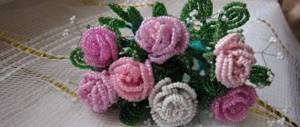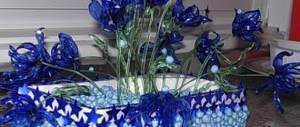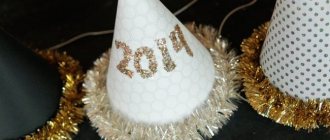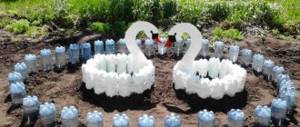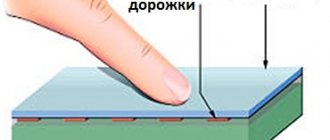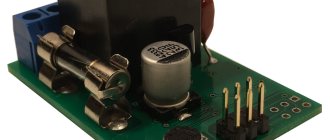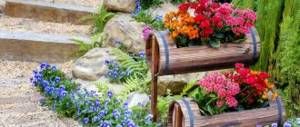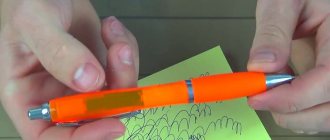I'm sure this glowing cube is the smallest in the world. There are smaller cubes, but they are either one-color or have fewer LEDs (3x3x3).
My LED cube is less than 2 cm, it uses 64 3.2x2.7 mm LEDs of the SMD RGB LED type (Surface Mounted Device, Red+Green+Blue, Light Emitting Diode). After reading the instructions, you will learn how to assemble such a cube.
Electronic circuit
Creating eight layers of 64 diodes each takes a lot of time, but it is quite simple to do.
The most difficult moment is building a circuit to control the LED cube and finding faults in the circuit, if of course there are any.
The MAX7219 chip will be used to control our cube. It was originally designed to control 7-segment LED displays. Using this chip, we will reduce the number of controls on each layer to a minimum.
To control each layer of 64 diodes you will need:
- Chip MAX7219;
- 10uF 16V electrolytic capacitor;
- 0.1uF ceramic capacitor;
- 12 kOhm resistor (1/4W);
- 24 pin DIP IC socket;
- Arduino Nano or Uno board.
To create a cube we will need 8 sets of the above components. It's also worth noting that you may need a different resistor for the specific LEDs you'll be using. Its role in this circuit is to limit the maximum voltage that the MAX7219 chip will produce.
MATERIALS AND COMPONENTS
Links to stores from which I have been purchasing for more than one year
You will most likely find it useful:
- Arduino NANO 328p – search
- https://ali.ski/tI7blh
- https://ali.ski/O4yTxb
- https://ali.ski/6_rFIS
- https://ali.ski/gb92E-
- Giant4 (Russia)
- LEDs with long legs 100 pieces
- Blue https://ali.ski/EwPQQK
- Pink https://ali.ski/UKge78
- Red https://ali.ski/rseXA
- Green https://ali.ski/suEgC
- Yellow https://ali.ski/1UQZP
- LEDs 10 pieces
- Blue https://ali.ski/4J3IEE
- Pink https://ali.ski/WHmG7
- Red https://ali.ski/bWAD1r
- Yellow https://ali.ski/NfCbf
- Green https://ali.ski/ZmnvJ
- Shift registers 74hc595n https://ali.ski/DnwaZ
- Transistors bd241c https://ali.ski/H9eCm
- Resistors https://ali.ski/cgfwE
- Transistors TIP41C (just in case) https://ali.ski/I9hH_
- Layout 8 by 12 cm https://ali.ski/e8SNm
- Comb https://ali.ski/4ujVt
- Look for buttons and stands in any stores for radio amateurs, since you can only buy a bag of 100 pieces from the Chinese!
How to make a wire cube
Let's make a cube (cube) out of wire.
We continue the series of lessons “Crafts from Wire”. Last time we made simple geometric shapes - this is a task for 5-7 year olds. But then an older group came - first and second grade. Over this year, their hands and eyes have developed greatly, and they can be given very complex tasks.
—Will you make a cube out of wire?
ABOUT! I appreciate such people - they enthusiastically began to experiment, although it was clear that they were also not familiar with wire... I handed out long, long pieces of wire and advised them to bend the ends into a loop so as not to get scratched. By the way, the guys made their cubes from wire without a preliminary plan, just by selection. I can’t say that the cubes turned out perfect, but I was proud - you have to believe in children - when they want, they can work miracles.
Wire cube - student's product
Moreover, some even managed to exactly fit into the proposed length of the segment and used it without leaving a trace:
And I’ll tell you a little theory.
Stages of making a cube from wire.
So, we draw a cube and count the sides - 12 pieces.
But we understand that it is not enough to just take a wire and bend it in half, then each half in half and then divide it into three - and like these are the sides of a cube. It’s complicated, imprecise, and – most importantly – you can’t just make a cube from one piece of wire: either some sides will have to be made double, or diagonals will be required. In general, with a division into 12 parts, utopia is not feasible.
Let's take a closer look at our diagram - here I draw in crimson the sequence of sides (the beginning is the green dot):
Having reached the corner with the blue dot, we are forced to admit that three sides have not been passed and are unattainable.
Here are two options as a way out: from two pieces of wire and from one, but with repetitions and diagonals.
How did I make it myself? And at random. I took the wire without insulation in the hope that the corners would be sharper than with insulation - (it rounds).
Yes, first you have to straighten it
So, I straightened the wire - pressing it with force, I stretched it across the metal edge of the table.
And she just started bending the sides.
The first steps are relatively easy, but difficulty is immediately revealed: the free long end of the wire dangles and, slightly unsteady, tries to hit your hands and face.
But now it's time to secure the corners. How? Wrap it in loops - how else?
Decorating the corners of a cube
Here the wire outdid itself, twisting and tangling. But I was more persistent - here is my design:
Marina Novikova told you how to make a cube from wire.
Tags: crafts from scrap materials, wire crafts
Assembly
Part 1
Basic steps to create one layer:
- Prepare 8 LEDs with cut cathode legs to 10 mm;
- Fill all the holes in the base with LEDs;
- Bend and solder the cathode legs;
- Bend and solder the anode legs;
- Solder the wires to the cathode legs and secure them.
This procedure must be repeated 8 times.
The assembly of one layer of the cube can be seen in the video:
Part 2
- Prepare 15 jumpers;
- Solder jumpers onto the printed circuit board;
- Solder the electronic components to the board;
- Solder a 5-pin right-angle connector for the first layer;
- Cut off the fifth anode contact;
- Insert and solder all anode legs to holes G, F, E, D, C, B, A and DP;
- Insert and solder cathode wires into holes D0, D1, D2, D3, D4, D5, D6 and D7;
- Cut the wires and legs from the back of the board.
The second part of the assembly in the video:
